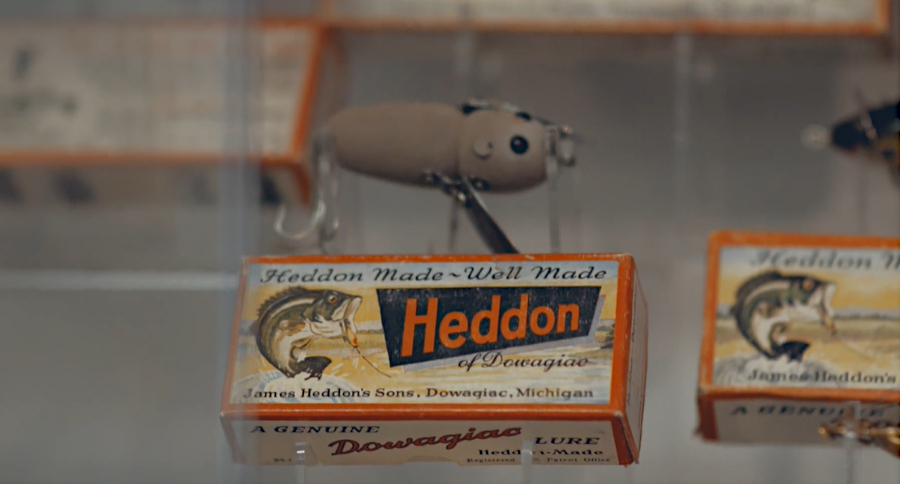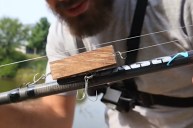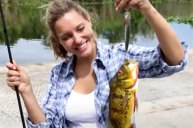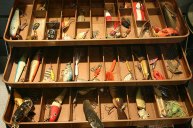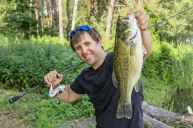Heddon Lures had humble beginnings in small town America.
When it comes to legendary American fishing tackle makers, Heddon Lures stands out from the crowd. Most anglers today know them for iconic topwater baits like the Crazy Crawler, the Heddon Zara Spook, Super Spook, saltwater Spook and puppy. The Heddon Torpedo, baby torpedo, and the Spit'N Image. All great fishing lures that still catch a plethora of species for anglers the world over.
These days the Heddon name is used by another manufacturer after the company was bought and sold many times over There is a cool legend on how the lure company's founder got the idea for the first topwater plug completely by accident. The idea that later went on to revolutionize the fishing industry.
Today, antique fishing lure collectors go nuts for some of the original Heddon offerings. Here is a brief history of how the company started and why some of their original offerings are worth so much money today.
An idea bore of pure chance?
Heddon Fishing Lures started up in the late 1800s in Dowagiac, Michigan, only about 15 miles from where I now sit typing this. I mention this because the southwest side of the Mill Pond outside of town has a small pull-off and picnic area named "James Heddon Park" in honor of the guy who started it all. A small sign in the park tells the local legend of how Heddon originally got the idea for the first fishing plugs. There is something special about fishing in this park. You can almost feel the echoes of angling history while you are there.
According to the sign, Heddon was sitting near this location on the water waiting for a friend. As he sat there killing time, he whittled away on a piece of wood. When he finally got up to leave, he tossed the carved-up piece of wood into the lake. As soon as the wood hit the water, a bass came up and took a swipe at it. The lightbulb immediately went on in Heddon's head and the fishing tackle industry would never be the same.
It is worth noting that this story is subject to some skepticism. The South Bend Tribune reported that historians note this story did not make the rounds until 1948. When it did, it was in promotional materials for the company. This has led some to wonder if that was really the way he got the idea. Perhaps the whittling story was invented simply as a marketing ploy. We may never know for sure because some of Heddon's early history has been lost to time.
Production Begins.
In any case, that great story does not change the fact that Heddon had a great idea for some of the first topwater plugs. The first Heddon wooden lure is thought to be a frog bait produced sometime around 1898. No one knows exactly how many he carved. There are not many of these old fishing lures left in existence, thus the value to collectors.
The product that really got the ball rolling for this lure company was a topwater plug called the "Dowagiac Casting Bait" in 1902. This lure gathered a few other names including the "Dowagiac Expert," and more popular with collectors, the "Dowagic Slope Nose." Rather primitive by today's standards, this bait featured a white torpedo-shaped body with a blue cone nose and a red collar that splashed water as it was retrieved. Heddon built 10,000 of these plugs, which sold out in weeks. It proved that there was a market for artificial fishing plugs.
While he had some early success, according to Old Fishing Lures, Heddon was not much a businessman. All he wanted to do was fish. We think that is something all of us can relate with! Fortunately, Heddon's sons, Charles and William, allegedly had better brains for moving the business forward. It was them that helped drive much of the company's early success. It is said that William even moved to Florida to work on prototypes for the fledgling lure company.
The company began producing wooden lures in a factory in Dowagiac around 1904 and they had a string of hits. Many of these antique lures are extremely collectible to this day because of their great looks and revolutionary features. The Heddon Dowagiac Minnow for example, had several different variations. The underwater minnow was produced through the mid-1930s. These lures were some of the first to feature metal lips for diving, glass eyes, props for vibration and hand-painted color schemes made to resemble shiners, shad or baitfish.
It is worth noting that at up to $1 each, many people could not afford these lures, especially since much their early history also overlaps the Great Depression era. However, the anglers who did use them had tremendous success. It could probably be argued that James Heddon was responsible for making topwater fishing as popular as it is today. These lures brought a whole new angle to fishing as an exciting, recreational sport that few people had considered previously. Sadly, James did not live to see many of the company's successes. He died in 1911, but his sons kept up the family legacy. As time went on, they introduced more classic lures like the Creek Chub, the Crab Wiggler, the Flipper 140, the Spin Diver, the Zargosa, the Musky Surfacer, and the River Runt. Most notable here is the Lucky 13, which has been in production for almost 100 years now. Today, just about any Heddon lure from 1902 through the mid-1930s is bound to be a collector's item, especially if you have the original box, which can be quite rare. If you can find one of their early plastic lures in good condition, you may have truly struck gold. Unfortunately, many older fishing lures have no survived this long into the 21st century. Still, it's worth checking your grandfather's attic or basement. Just in case right?
The sale of Heddon and the company today.
This lure brand continues to chug along more than 100 years later just like a Heddon Crazy Crawler churning the surface of a placid pond on a warm summer evening. The Heddon of today is not quite the same as the one of yesteryear of course. The company was originally sold back in 1955 before eventually becoming part of Pardco Outdoor brands alongside other famous names in angling like Bomber, Lindy, Rebel, Cotton Cordell and Arbogast.
In world where many of today's fishing lures feel more like gimmicks designed to catch fisherman rather than fish, we love that the simplicity of the company's designs remains largely unchanged. A Heddon Torpedo is much the same as it was many years ago, only now with more size options like the Tiny Torpedo and Heddon Baby Torpedo added into the mix for panfish species.
You know what? We would not have it any other way. It is good to see classic lures like the Pop'n Image, the Sonar Flash, Moss Boss, and Hellbender still soldiering along in the modern era. They even brought back the original Slopenose lure out of retirement so a new generation of anglers could finally experience it. We look forward to seeing Heddon's next 100 years. We hope they are just as successful as the first century!
For more outdoor content from Travis Smola, be sure to follow him on Twitter and check out his Geocaching and Outdoors with Travis YouTube channels.
NEXT: THE AXIS DEER AND HOW THEY'RE IMPACTING PARTS OF THE UNITED STATES
WATCH
